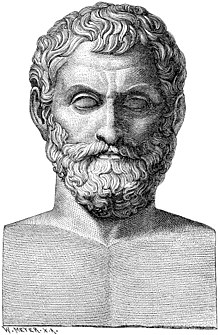After a bit of experimentation, this is the ultra-macro setup that I like best. I should caveat this all by saying that I’ve only been shooting macro for a few months. I’m of course open to suggestions for improving this setup.
Lens
Canon MP-E 65mm f/2.8
Whereas most macro lenses will do 1x magnification, meaning the subject is a 1:1 ratio to the sensor, this lens will do an incredible 5x.
It’s not a particularly easy lens to use—it’s neither auto-focus or manual focus, you focus by moving the camera. Also, once you’re out at 5x, you pretty much have to use flashes—very little light makes it to the sensor.
That even with those downsides though, if you want to get close and avoid extension tubes, this is pretty much the lens to use. I don’t think there’s anything particularly wrong with extension tubes by the way, just that you have to take them on and off and you don’t get nearly as granular a zoom range as you do with the MP-E 65mm.
Lens Accessories
Raynox DCR-250 2.5x Super Macro Lens
This is a clip-on magnifier that increases the magnification even further. I’m still not 100% sure that it doesn’t reduce the sharpness, but as far as I can tell, it doesn’t.
The biggest downside is that with 5x magnification plus the 2.5x of the Raynox, the depth of field you’re left with even at f11 or higher is ridiculously small. To give you an idea, if you were focusing on a coin, say a penny, top down it’d be tough to get it in focus because the depth of field at f8 is less than depth the relief on the penny’s face. I also find that I have to turn my flashes all the way up to 1/1 (the highest setting) to get enough light. Even then, I’m usually shooting at ISO 1000 or higher.
But, if you want to get even closer, this will do it.
Fotodiox E.F.-Sony(E) Fusion Small AF Adapter
Since I’m using a Canon lens on a Sony body, I need an adapter. This one works just fine. It enables the camera to control aperture—lesser adapters have no electronic contacts. The MP-E 65mm has no focus, but for other lenses, the Fotodiox will also allow a Sony body to focus a Canon lens. The adapter also allows the camera to record the EXIF data from the lens.
Camera
I use a Sony A9. This is not the best camera for macro photography, but it’s not bad. The downside is that it’s “only” 24mp. The upside is that it’s an ISO champion. If I had an unlimited budget I’d get a Sony A1 which is, from what I understand, the best of both worlds. With 50mp, you effectively get even more zoom since cropping at 1:1 will magnify the subject more.
Note that the A1 would be the best all-around + macro Sony camera for me. That’s because I usually am a bird photographer. If you only planned on doing macro photography, you’d probably want to go for the highest resolution camera you could find.
Other Accessories
Sirui K-40X Ball Head
When you’re shooting ultra macro you need your tripod setup to be extremely stable. You will also want a tripod head that holds a lot of weight. I spent way too much time with small tripod heads that drifted all over the place before I finally upgraded to the ~$120 K-40x. This ball head is rock solid and doesn’t break the bank.
3 Legged Thing Brian CF
This is not the best tripod for macro since it’s not super heavy, but it’s a pretty good compromise. It lets you flip the center post so you can shoot straight down. It’s carbon fiber so it’s relatively light and stable. It’s also cool looking and well priced.
Bolt VM-1020S Speedlights / Flash
This isn’t the brightest flash ever made, but it’s a really nice set. It supports TTL for Sony and comes with a lot of nice accessories. Notably, you can clip the flashes to a ring on the end of the lens and rotate them around the lens. In practice, this isn’t always the best since the light from very close, unmodified flashes is pretty harsh, but in a pinch it’s quick and effective.
For setups where you have more time and space, you can easily use the flashes as you would any other speedlights and the kit includes table stands, gels, and a few other nice-to-haves.
Dual arm flash hot shoe bracket
This is a bracket that screws on to the bottom of your camera and has two flexible arms with flash mounts on them. Search for it on Amazon, Ebay, or Ali Express. It seems to be a generic product manufactured in China that you can pick up for under $20. It’s a nice way to get a more flexible flash setup.
Macro focusing rail slider
Another generic product that you can pick up for ~25. I’m not so sure that the one I have is the best, but it works okay. Since that’s all I know about it, I’ll leave it at that.

General thoughts about ultra-macro
Ultra-macro is fun on a technical level and reveals surprising details about everyday objects. Aside from technical challenges, the biggest difficulty I’ve found is making beautiful photos. Many of my photos turn out to be geometrically interesting or maybe even scientifically useful, but they don’t necessarily elicit much emotion, at least not for me.
I don’t say that to be discouraging, I’m still trying to figure it out. I like the challenge and I know it’s possible to make compelling ultra-macro photos because I’ve seen others take truly beautiful pictures of everything from snowflakes to grains of sand. Personally though, I’m still in the phase of working through the technical aspects.











